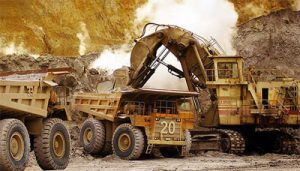Mining engineering is an engineering discipline that involves the practice, theory, science, technology, and application of extracting and processing minerals from a naturally occurring environment. Mining engineering also includes processing minerals for additional value.
Mineral extraction is essential to modern society. Mining activities by their nature cause a disturbance of the environment in and around which the minerals are located. Mining engineers must therefore be concerned not only with the production and processing of mineral commodities but also with the mitigation of damage to the environment as a result of that production and processing.

History of mining engineering
Since the beginning of civilization, people have used stone and ceramics and, later, metals found on or close to the Earth’s surface. These were used to manufacture early tools and weapons. For example, high-quality flint found in northern France and southern England was used to set fire and break rock. Flint mines have been found in chalk areas where seams of the stone were followed underground by shafts and galleries. The oldest known mine on archaeological record is the “Lion Cave” in Swaziland. At this site, which radiocarbon dating indicates to be about 43,000 years old, paleolithic humans mined mineral hematite, which contained iron and was ground to produce the red pigment ochre.
The ancient Romans were innovators of mining engineering. They developed large-scale mining methods, perhaps most notably the use of large volumes of water brought to the mine head by numerous aqueducts for hydraulic mining. The exposed rock was then attacked by fire-setting where fires were used to heat the rock, which would be quenched with a stream of water. The thermal shock cracked the rock, enabling it to be removed. In some mines, the Romans utilized water-powered machinery such as reverse overshot water wheels. These were used extensively in the copper mines at Rio Tinto in Spain, where one sequence comprised 16 such wheels arranged in pairs, lifting water about 80 feet (24 m).
Black powder was first used in mining in Banská Štiavnica, Kingdom of Hungary (present-day Slovakia) in 1627. This allowed the blasting of rock and earth to loosen and reveal ore veins, which was much faster than fire-setting. The Industrial Revolution saw further advances in mining technologies, including improved explosives and steam-powered pumps, lifts, and drills as long as they remained safe.
We are an active player in Iron Ore Mining in IRAN. We aim at optimum harnessing of rich mineral resources in IRAN, with due consideration to the environment adopting best mining practices.

